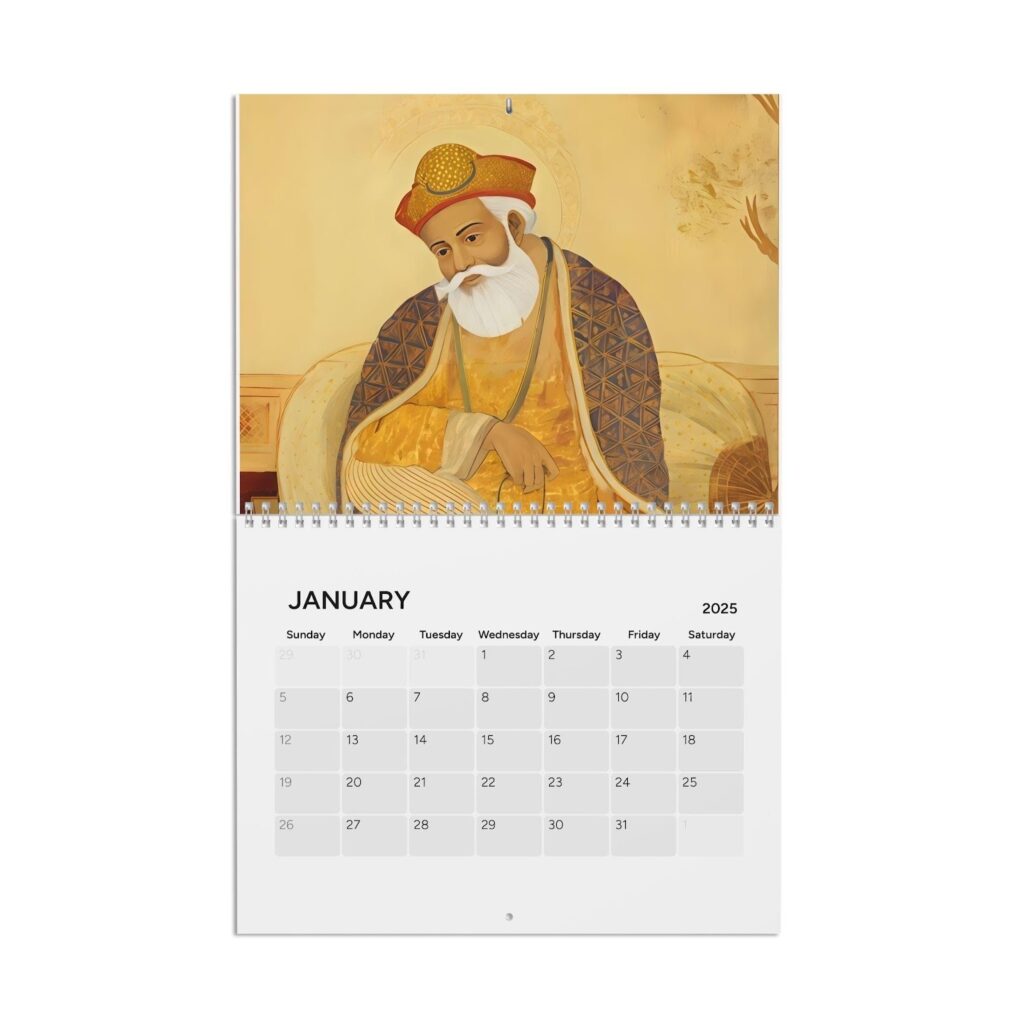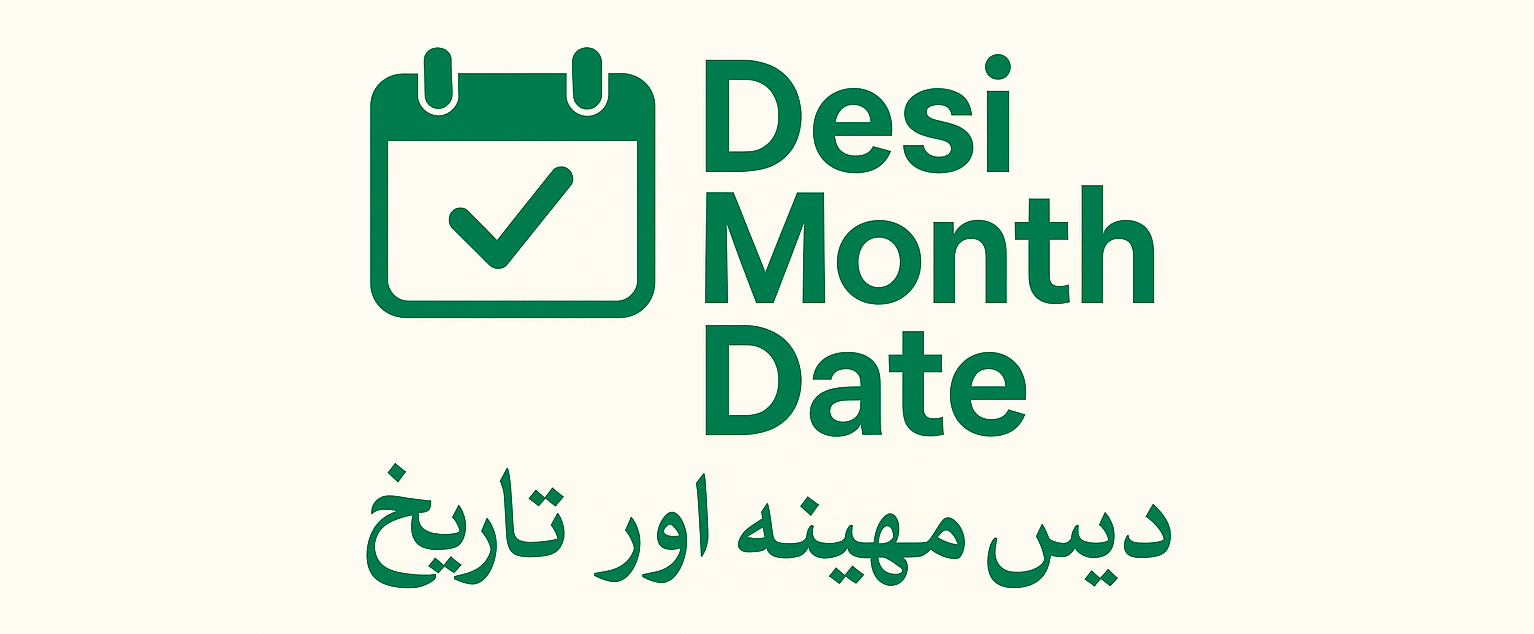You check the desi month date today. It ties you to Punjab’s past. This calendar shapes lives in Pakistan and India. Farmers plan crops. Sikhs mark Gurpurabs. Hindus celebrate festivals. We explore its story here.

A traditional Punjabi calendar illustration showing Sikh Gurus and dates.
Punjabi people use this system daily. It blends sun and moon cycles. Bikrami starts it all. Nanakshahi adds a Sikh focus. Both guide Punjab Muslims, Hindus, and Sikhs.
Today desi month date in Pakistan shows Kattak. In 2025, it falls on October 18. Families in Lahore check for events. Diaspora in Kenya follow too.
Scholars like W.H. McLeod explain its role. Eleanor M. Nesbitt details cultural ties. Tej Bhatia covers Punjabi names.
Roots in Ancient Times
Vedic sages create early versions. They watch moon phases. Rigveda mentions them. Punjab adapts for local weather.
King Vikramaditya names Bikrami in 57 BC. He beats Sakas. Malwa people start it in northwest Punjab. It spreads to Hindus.
Archaeology shows its use. Farmers time sowing. Seasons match months like Chet for spring.
Punjabi Hindus stick to Bikrami. It helps with rituals. Moon shifts dates slightly each year.
Guru Nanak influences changes. He teaches nature’s cycles. Sikhs use it but add own twists.
British bring Gregorian. Desi stays for culture. Post-1947, Pakistan and India keep it.
Knut A. Jacobsen notes religious displays. Shafqat Tanvir Mirza writes on Pakistan views.
Birth of Nanakshahi Calendar
Sikhs need fixed dates. Bikrami drifts. Gurpurabs move. Pal Singh Purewal designs Nanakshahi.
In 1999, SGPC adopts it. It starts from Guru Nanak’s birth. Tropical year length fixes seasons.
2003 launches full version. It reduces errors. Bikrami slips one day every 71 years. Nanakshahi slips in 3,300 years.
Controversies arise. Some prefer old ways. 2010 sees adjustments. Now, many Sikhs use it.
Harajindara Singh Dilagira shares in books. Gursharan Singh discusses interfaith.
Key Differences: Bikrami vs Nanakshahi
Bikrami mixes luni-solar. Months start on Sangrand. Dates shift with moon. It suits farming.
Nanakshahi uses solar only. Fixed to Gregorian. Chet always March 14. Gurpurabs stay same.
Punjabi Muslims use Bikrami with Hijri. Sikhs choose Nanakshahi for consistency.
In Orissa, it blends with Hindu ways. Nepal calendar shares roots.
Diaspora likes fixed dates. Planning events easy. Cynthia Salvadori notes Kenya use.
Table shows contrasts:
| Feature | Bikrami | Nanakshahi |
| Type | Luni-solar | Solar |
| Year Start | Varies | March 14 |
| Date Drift | Yes | No |
| Main Users | Hindus, Muslims | Sikhs |
This helps choose for desi month date today.
Agricultural Role in Punjab
Desi months guide farmers. Chet preps soil. Vaisakh harvests wheat. Punjab fields thrive.

Punjabi farmers harvest in golden fields during Vaisakh.
Harh brings monsoon. Plant rice then. Sawan weeds crops.
Bhadon guards from floods. Assu picks cotton. Kattak sows barley.
Maghar fertilizes land. Poh plants mustard. Cold needs care.
Magh renews with greens. Phagun clears stubble.
Krishnamurthi Ramasubramanian explains astronomy. Biodiversity grows.
Punjab Pakistan relies on it. India too. Climate change challenges old ways.
Farmers in Central Valley adapt. Sikhs emphasize hard work.
Modern Adaptations and Use
Apps track desi dates now. Download Jantri PDFs. Multilingual options help.
Today desi month date in urdu aids Pakistan users. Gurmukhi for Sikhs.
Diaspora in UK plans melas. Kenya Punjabis celebrate Gurpurabs.
Schools teach history. Books like “The Sikh Reference Book” detail.
2025 sees full use. Sangrand dates fixed in Nanakshahi.
Communities blend with Gregorian. Work schedules match festivals.
Why It Matters to You
This calendar connects roots. Families share stories. Farmers feed nations.
Check desi month date today Lahore. Plan your year.
We update for accuracy. Join our community.

